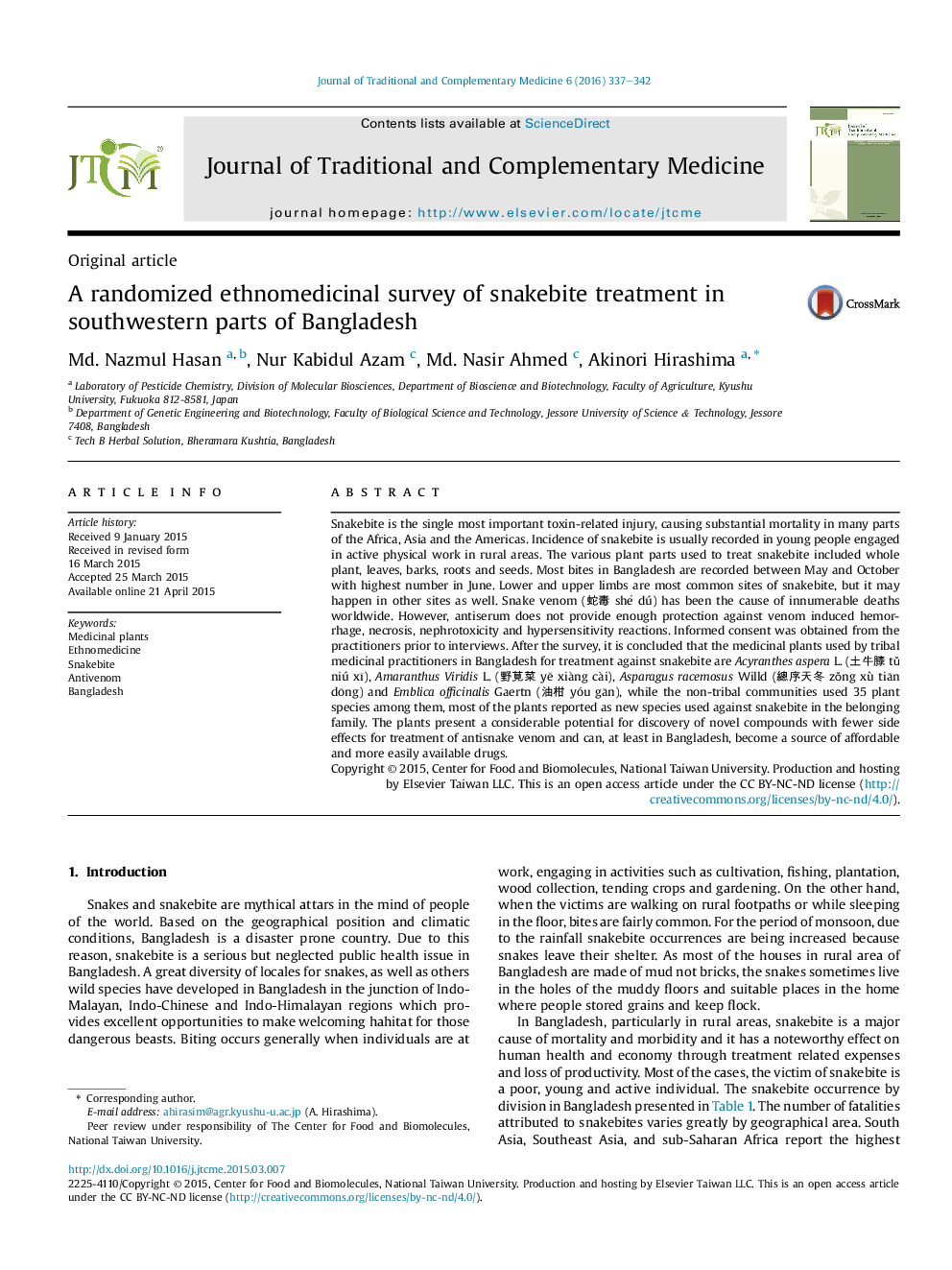| Article ID | Journal | Published Year | Pages | File Type |
|---|---|---|---|---|
| 5635402 | Journal of Traditional and Complementary Medicine | 2016 | 6 Pages |
Snakebite is the single most important toxin-related injury, causing substantial mortality in many parts of the Africa, Asia and the Americas. Incidence of snakebite is usually recorded in young people engaged in active physical work in rural areas. The various plant parts used to treat snakebite included whole plant, leaves, barks, roots and seeds. Most bites in Bangladesh are recorded between May and October with highest number in June. Lower and upper limbs are most common sites of snakebite, but it may happen in other sites as well. Snake venom (èæ¯ shé dú) has been the cause of innumerable deaths worldwide. However, antiserum does not provide enough protection against venom induced hemorrhage, necrosis, nephrotoxicity and hypersensitivity reactions. Informed consent was obtained from the practitioners prior to interviews. After the survey, it is concluded that the medicinal plants used by tribal medicinal practitioners in Bangladesh for treatment against snakebite are Acyranthes aspera L. (åçè tÇ niú xÄ«), Amaranthus Viridis L. (éè§è yÄ xià ng cà i), Asparagus racemosus Willd (總åºå¤©å¬ zÇng xù tiÄn dÅng) and Emblica officinalis Gaertn (æ²¹æ yóu gÄn), while the non-tribal communities used 35 plant species among them, most of the plants reported as new species used against snakebite in the belonging family. The plants present a considerable potential for discovery of novel compounds with fewer side effects for treatment of antisnake venom and can, at least in Bangladesh, become a source of affordable and more easily available drugs.
Graphical abstractDownload full-size image
